Thiago Alcantara has now been sidelined for over six weeks with the injury sustained in the challenge from Richarlison and his return is now not expected until the New Year.
Liverpool have been extremely coy on the details of the Spaniard’s injury and while Jurgen Klopp has insisted there was no setback, Thiago was first pictured back in individual training over a month ago now.
Speaking ahead of the Man City match almost a month ago, Klopp said that Thiago’s return “will not be too long anymore but for this game I don’t think he will be in.”
Since then, the manager has been increasingly coy and when asked directly about Thiago and Jordan Henderson in last Friday’s press conference he answered only on Henderson.
Speaking on Monday, Klopp admitted Thiago is still out for at least a “few weeks” and the club soon after told journalists that the player is expected to be out until the New Year – taking his total time on the sidelines to well over 10 weeks.
So what exactly could this mean?
Based on multiple factors, including the mechanism of injury (MOI, aka how the injury happened) with the player’s knee being forced into hyperextension (backwards) and varus (outwards) and the apparent fluctuations with his playing status, four possibilities come to mind.
(NB. I want to reiterate that by no means do I purport to know Thiago’s injury, I’m only connecting medical dots.)
#1 Ligament injury severity worse than expected
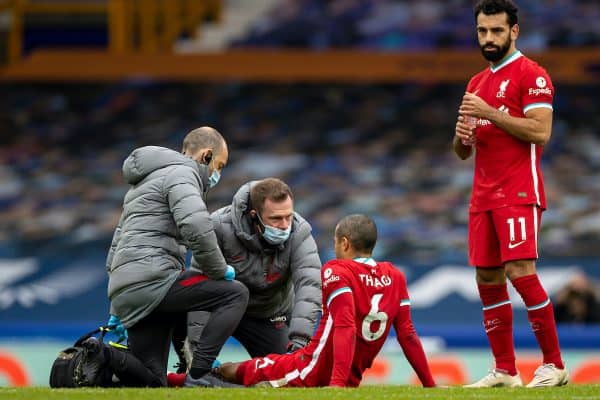
Based on the aforementioned MOI, it’s likely Thiago suffered a partial tear to one or more knee ligaments, more than likely the lateral collateral ligament (LCL).
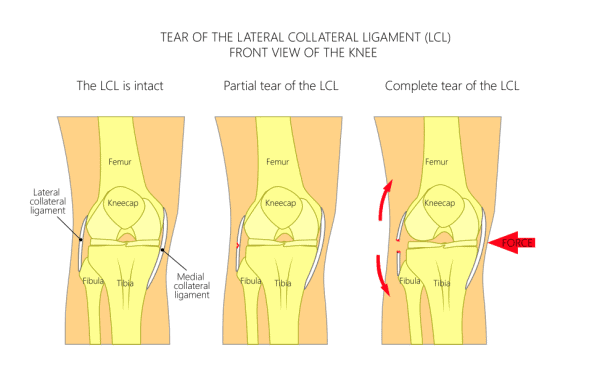
Diagnosis ligament injury severity isn’t an exact science so it’s possible the initial ligament injury – typically categorised into three grades:
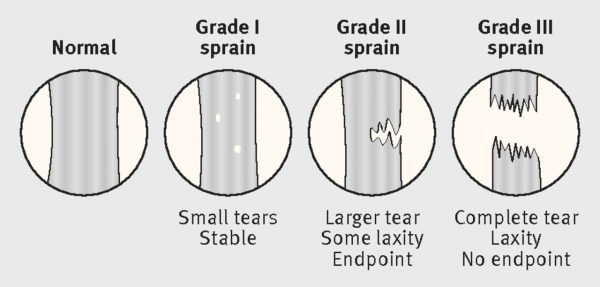
A higher severity grade 2 rather than a grade 1 aligns with original reporting of a “mild” injury.
It’s also possible Thiago suffered mild damage to his posterior cruciate ligament (PCL) which may be adding to the extended timeline and recovery period.
#2: Pain/dysfunction lasting longer than expected
If Thiago’s injury was a grade 1 ligament tear, there’s an interesting phenomenon that can occur where the body doesn’t take the injury as “seriously” as a higher severity injury and thus doesn’t take an “all hands on deck” approach with allocating healing resources.
In these cases, that lesser allocation results in a longer time course of pain which subsequently impacts function and performance.
#3 Bone bruise (most likely)
Thiago’s injury can be accompanied by a “bone bruise” aka a micro trabecular fracture.
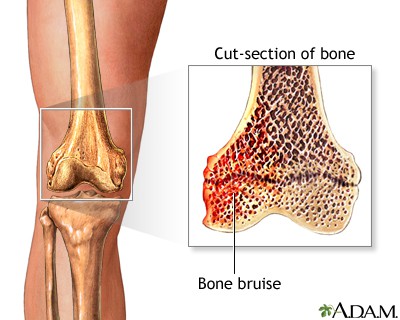
These can often manifest days to weeks after the initial injury and therefore do not show up in the initial testing.
Often, a micro trabecular fracture (bone bruise) is only discovered when a player begins to experience unanticipated pain and loss of function after ramping up weight-bearing activities which leads to a follow-up MRI and discovery of the injury.
These can be very “touch and go” with significant variance on return timelines – I’ve personally seen knee bone bruises resolve functionally as quickly as one week to as slowly as four months.
A bone bruise would explain why Thiago’s injury was first considered mild (bone bruise not apparent on initial MRI), why the team may have believed he could play but then was unable (pain and dysfunction only manifesting as he attempted to ramp up), and then considered worse than initially feared (bone bruise discovered on follow-up imaging).
#4 Nerve dysfunction
With Thiago’s injury type, there’s a possibility of injury to the “peroneal nerve” that courses on the lateral (outer) aspect of the knee, near the outer lower leg bone (the fibula).
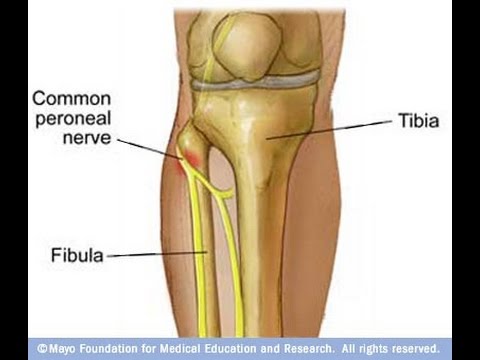
With mild nerve injuries, there can be changes in sensation and temporary loss in function that often fluctuates for extended periods of time.
I know the term “nerve injury” is scary but I want to reiterate that this doesn’t mean permanent nerve damage or anything of the like. Nerves – like muscles or ligaments or tendons – can be mildly damaged and heal very well.
The upshot
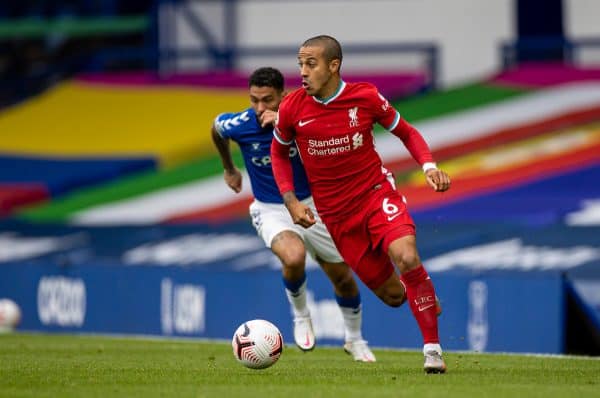
There are certainly valid reasons and possibilities why Thiago may be missing this much time – injury timelines often fluctuate and evolve, for better or for worse – but the good news is he’s in excellent hands with the Liverpool medical and training staff along with Klopp.
Regardless of the reason – or combination of reasons – I’m quite confident the team will continue to take a responsible approach to managing his return and making sure he’s as 100 percent fit as possible prior to returning to the pitch and pulling the strings like only a player of his calibre can.

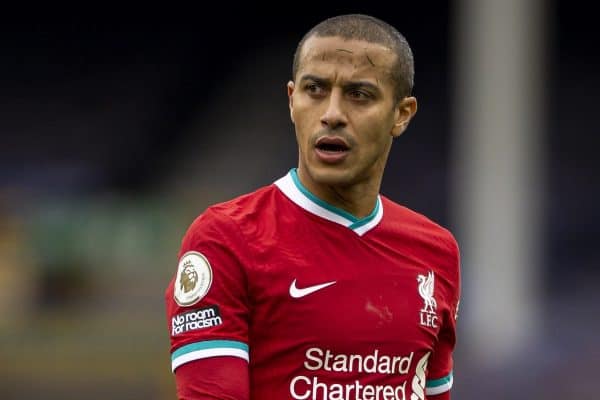




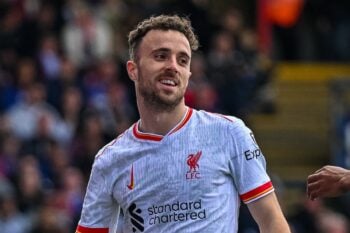
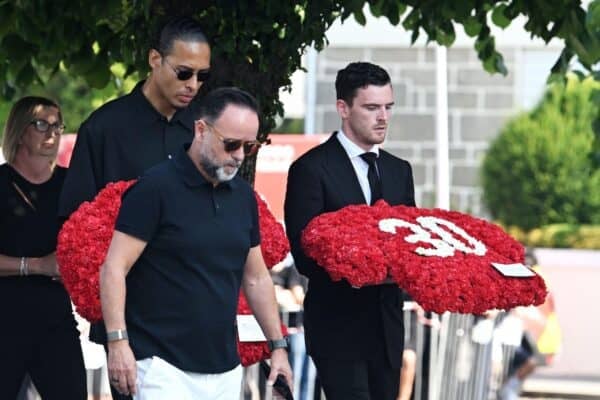
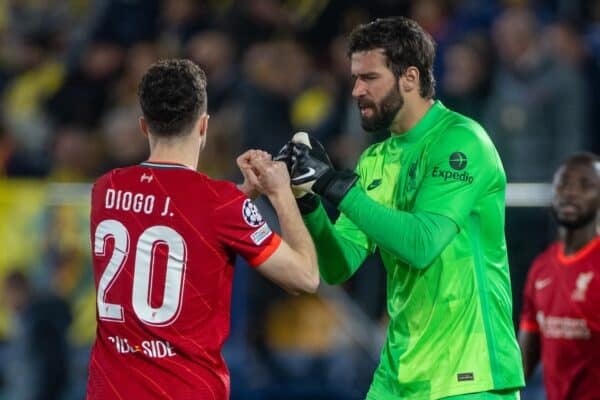
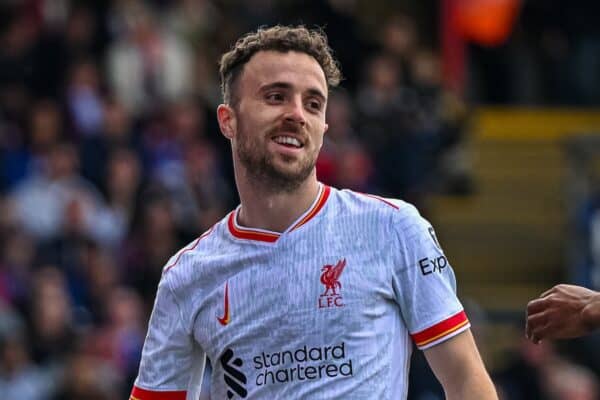
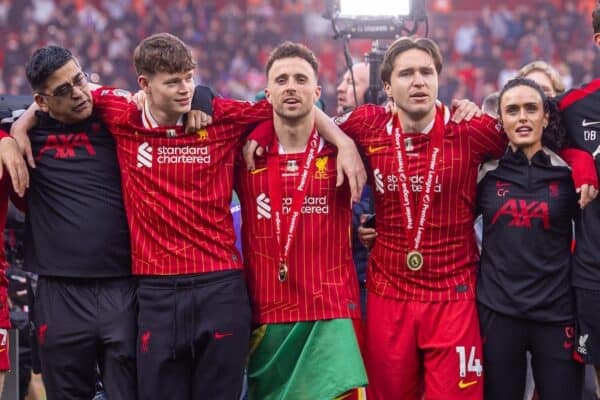
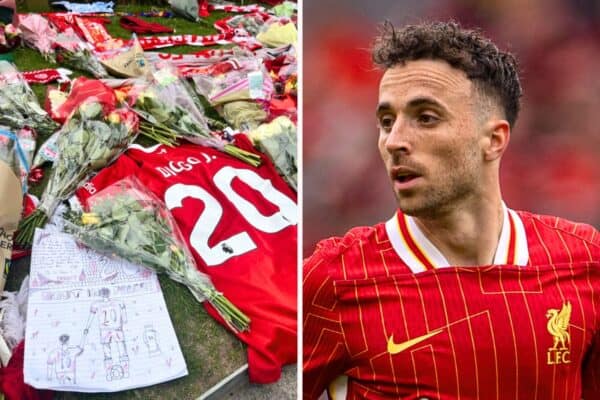

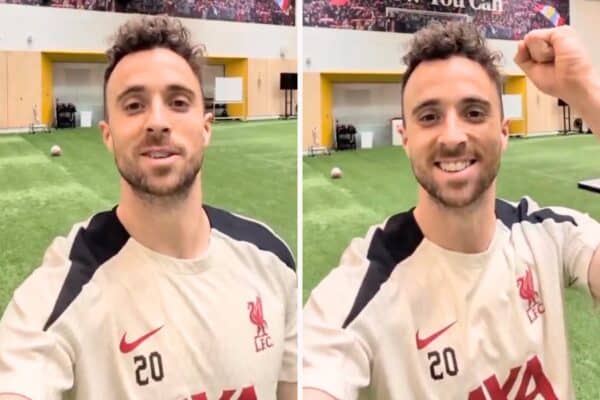
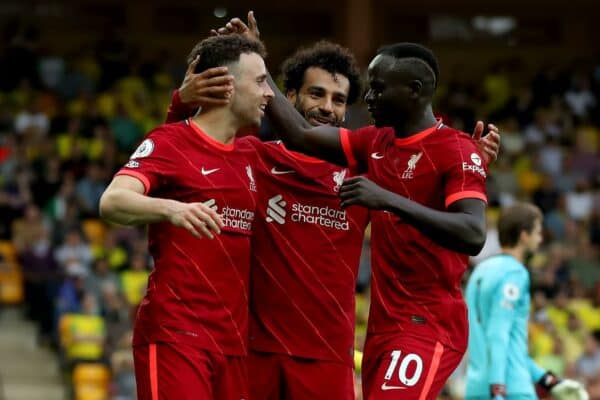



Fan Comments